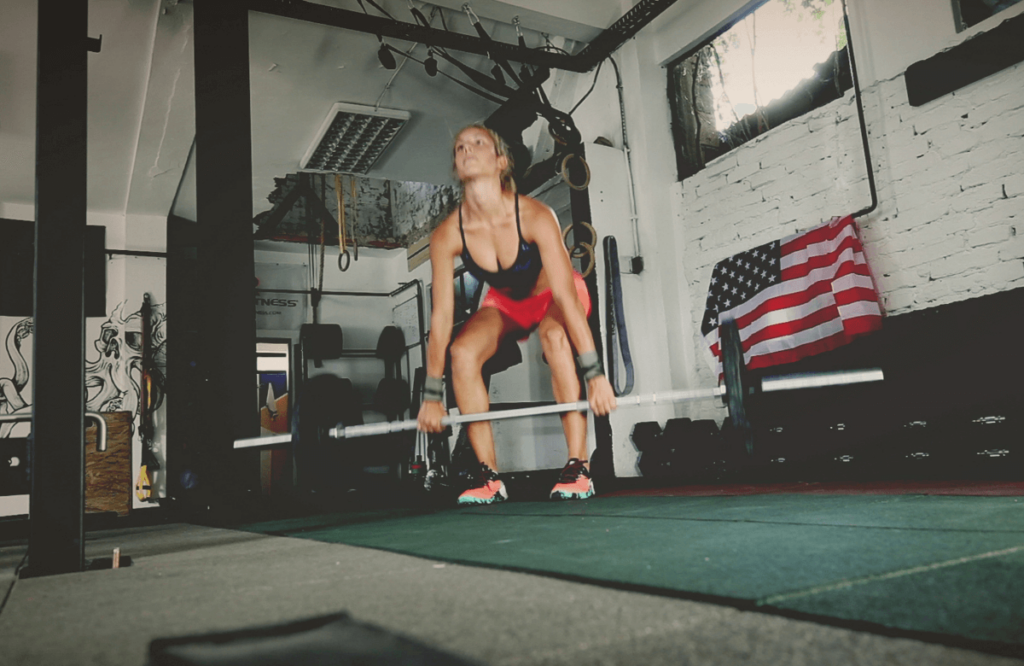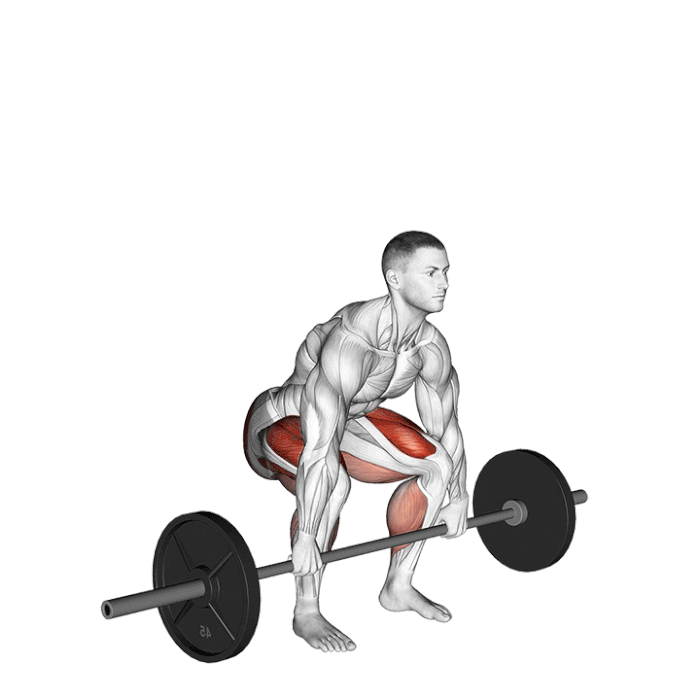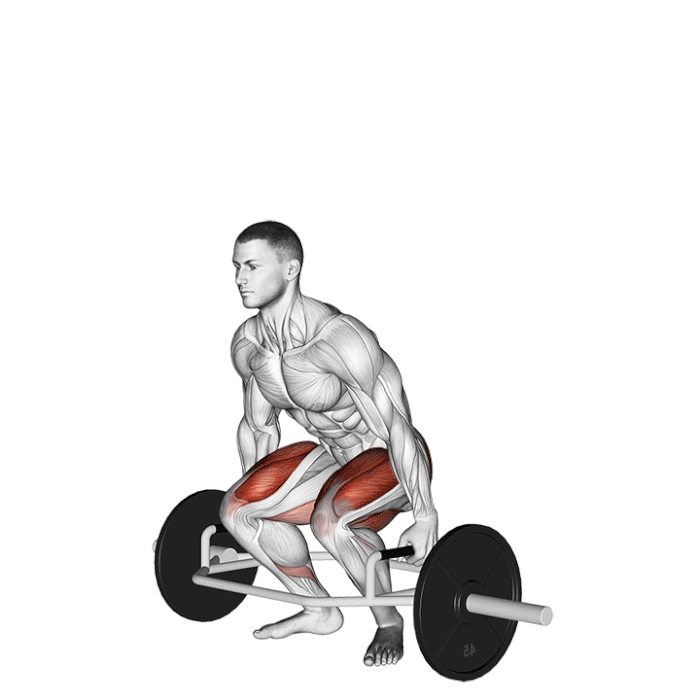The deadlift is one of the most fundamental exercises in strength training. In a single movement you train your legs, glutes, back, core and traps. It’s most people’s strongest lift, and a bedrock of most strength training programs.
Deadlifts can be performed in a number of different ways, with several different items of equipment. In this article we’re going to focus on two types of deadlifts: barbell deadlifts and trap bar deadlifts.
You’ll learn the winners of the deadlift barbell vs trap bar deadlift battle, and why.
Jump to:
- Technical Differences between Barbell and Trap Bar Deadlifts
- Deadlift Barbell vs Trap Bar – is there a difference in weight lifted?
- Body Positioning
- Are the muscles worked in the same way?
- Variability of the trap bar deadlift
- Barbell deadlift variations
- Regular and trap bar barbell deadlift – which one, when and why…
Technical Differences between Barbell and Trap Bar Deadlifts
The main technical differences between the two types of deadlifts are the type of bar, the distribution of the weight and the muscle recruitment during the lift.
With a conventional barbell deadlift, the straight barbell is used. This puts the weight in front of the lifter. With a trap bar deadlift, the lifter is in the middle of the bar, with the weight either side. Thanks to a lifter being in a central position, the weight is spread across the legs and back more evenly, reducing the size of the forces on the back.
This was established in a 2011 study titled ‘A Biomechanical Analysis of Straight and Hexagonal Barbell Deadlifts Using Submaximal Loads’. Researchers observed…
The design of the hexagonal barbell significantly altered the resistance moment at the joints analyzed, resulting in lower peak moments at the lumbar spine, hip, and ankle and an increased peak moment at the knee…
In English, this means the emphasis for moving the bar shifted to the legs and away from the lower back. It allows more acceleration to be derived from the lower body, which increases the amount you can lift with a trap bar.

Deadlift Barbell vs Trap Bar – is there a difference in weight lifted?
The amount of weight you can lift with a trap bar deadlift is typically more than you can lift with a barbell deadlift. This is because the trap bar puts the weight in a more mechanically advantageous position for the lifter.
There’s a couple of reasons for this…
1. Your range of movement with a trap bar is shorter. When you have to move a load a shorter distance, it’s easier.
2. The legs put more of the acceleration into the trap bar, helping to lift more weight. The legs are the strongest muscles in the body, so using them allows you to lift heavier loads.
The net result of these points can be explained by conclusions made from a 2017 study titled ‘Effect of a Hexagonal Barbell on the Mechanical Demand of Deadlift Performance’…
‘…significantly heavier loads can be lifted during the hex bar deadlift. Furthermore, they are moved through the same range of motion significantly faster, and the load is accelerated for significantly longer.’
These greater forces, applied for longer and with a shorter range of motion means that when it comes to pure strength and lifting heavy weights, the trap bar deadlift is a clear winner.
The quad activation, the recruitment of the same muscles and the advantageous grip strength position thanks to neutral grip handles combine to make the trap bar deadlift a better way to lift heavier weights.
Body Positioning
With a barbell deadlift, you need to have good hip mobility in order to reach the bar and maintain a flat back and neutral spine during the lift.

Credit: Aliaksandr Makatserchyk
With a trap bar deadlift, you don’t need as much hip mobility because the handle bars are closer to the body.

Credit: Aliaksandr Makatserchyk
The only time this changes is when you lift with the handles in a lower position, or you perform deficit deadlifts with the bar.
The starting positions with the two lifts are very similar, but the greater knee flexion and hip hinge position required for straight bar deadlifting mean that it’s only really suitable for those with a greater range of hip flexion.
The other points (upright torso, activation of the posterior chain, spinal position etc) are the same whether you’re performing a straight bar deadlift or a trap bar deadlift.
Grip positioning barbell deadlift
With a barbell deadlift, you can use a pronated grip (palms facing forward) or a mixed grip (one palm facing forward and one palm facing backward). You can also adjust the width of the grip (close grip, wide grip), which will change the muscle activation patterns.
The mixed grip is typically used for heavier weights because it helps to prevent the bar from rolling out of your hands. Although the evidence that it works is mostly anecdotal, it really is an effective form of grip for heavy conventional deadlifts.
Grip positioning trap bar deadlift
With a trap bar deadlift, you can only use a neutral grip (palms facing each other) because the handles dictate so. If the hands aren’t centrally located on the handles, the bar will tip forwards or backwards, so there’s no variation in grip available at all.

Are the muscles worked in the same way?
The muscles worked in a barbell deadlift and a trap bar deadlift are largely the same. The difference is in the sequencing and the amount of work done by the individual muscles, as we discussed earlier in the article.
The trap bar deadlift has a longer, more powerful leg drive than the deadlifts with a traditional barbell, especially when the low handles are used. This is because there is a deeper knee bend required to reach the handles. The legs are the strongest muscles in the body, which allows them to generate more force.
The greater degrees of knee flexion mean that more power is put into the bar from the legs, and it moves at a faster velocity as a result.
This was found in a 2016 research paper titled ‘An Examination of Muscle Activation and Power Characteristics While Performing the Deadlift Exercise With Straight and Hexagonal Barbells’, where the researchers drew the following conclusions…
‘the hexagonal-barbell deadlift demonstrated significantly greater peak force, peak power, and peak velocity values than those of the straight-barbell deadlift’…
The normal barbell deadlift activates the glutes and hamstrings more. They rely less on a leg drive to lift the bar (although it’s still a major element of the initial lift), and instead load the posterior chain (hamstrings, glutes, lower back).
There’s also a suggestion that erector spinae is activated more on the eccentric (lowering) phase of the straight bar deadlift than the hex bar deadlift, but this isn’t always replicated across the studies. The reality is that both types of lift will activate the upper back muscles in a similar way.

Variability of the trap bar deadlift
The trap bar deadlift is a more versatile exercise than the conventional barbell deadlift. However, there are more variations of deadlifts you can perform with a straight bar. The versatility in the trap bar is because you can use different handle heights to target different muscle groups…
High handles
High handles are the most commonly-used type of handle on a trap bar. They work the lower back more than low handles.
This type of deadlift will typically allow you to lift the most weight, because the advanced starting position means the ranges of motion are smaller, and a decreased range of movement means there’s less effort required to move a heavy weight.
Low handles
Low handles work the legs and glutes more than high handles. They’re a much harder exercise and can be a legitimate substitute for squats, especially for tall lifters.
You do need great ankle mobility to make the most of low handle trap bar deadlifts, but they activate both the quad muscles and the back muscles incredibly effectively. They are also an awesome tool for improving aspects of athleticism, such as vertical jumping ability.
Barbell deadlift variations
There are several variations of the barbell deadlift. They all have different training outcomes and purposes, so are all useful in their own right. The most common variations are:
Conventional deadlifts
This is the standard barbell deadlift. Big numbers, relatively simple technique to perform, great exercise for anyone from a beginner to an elite-level powerlifter. Conventional deadlifts are one of the very best exercises for building strength, working a hip hinge pattern and stimulating muscle growth.
Stiff leg deadlifts
This variation is performed with a straight back and the knees almost locked straight. It places a lot of emphasis on the hamstrings and lower back. It’s not a way to lift huge weights, but stiff leg deadlifts are one of the best hamstring exercises around.
Sumo deadlift
This variation is performed with the feet wider than shoulder-width apart and the toes pointing out. It’s not universally loved in deadlifting circles, but it’s a very useful exercise, serves as a good variation and changes the use of the legs and hips compared to standard deadlifts.
Regular and trap bar barbell deadlift – which one, when and why…
The best type of deadlift for you will depend on your individual goals and abilities. They both have their advantages and disadvantages…
Trap bar deadlift – advantages and disadvantages
Whilst this may not be a popular suggestion amongst the purists, the research is strong in support of the use of the hex bar. In the 2011 study titled ‘A Biomechanical Analysis of Straight and Hexagonal Barbell Deadlifts Using Submaximal Loads’, the researchers concluded with the line…
‘The enhanced mechanical stimulus obtained with the hexagonal barbell suggests that in general the Hex Bar Deadlift is a more effective exercise than the Straight Bar Deadlift.’
What’s important to note here is that the researchers have no agenda, other than to assess the data and report on their findings. They don’t have a dog in the fight so to speak, so their conclusions are based on facts, not opinions.
The disadvantage of the trap bar deadlift is the lack of variety. You’re limited to two variations – high handle and low handle. Outside of that, you’re kind of stuck. You’ve got nowhere else to go.
Straight bar deadlift – advantages and disadvantages
The straight bar advantage lies in its versatility. A straight bar can be used for regular deadlifts, Romanian deadlifts, sumo deadlifts, suitcase deadlifts, stiff legged deadlifts etc. You can switch your grip to wide, narrow, overhand grip, hook grip etc. It’s capable of being a whole host of different deadlifts, rather than just a couple.
You can still lift very heavy with the straight bar deadlift, so the performance gap isn’t as wide as you might think. With the variety enabled by the straight bar, you can target different exercises and areas of the lower body depending on your goals and injury history.
The disadvantages are that whilst the performance is similar to the trap bar deadlift, if you’re concerned purely about numbers and athleticism, it’s not quite as effective, according to the research. There’s also a great impact on the spine, which can make a lifter more vulnerable to injury.Ultimately though, the best way to decide which type of deadlift is right for you is to experiment with both and see which one suits your goals and workout preferences. They’re both excellent exercises when applied to a training program appropriately.














